Special Report
25 Richest Countries in the World

Published:
Last Updated:

Income inequality has become a hot button political issue in the United States over the last several years. Unequal distribution of wealth is not an issue unique to the United States, however.
North America is home to fewer than 5% of the global population — yet the continent’s combined gross domestic product accounts for over one-quarter of global economic activity. Meanwhile, South Asia is home to nearly one-quarter of the world’s population, yet the region’s economic output accounts for less than 4% of global GDP.
While GDP is a practical way to measure the size of a given country or region’s economy, it does not accurately reflect the overall wealth of a population. Unlike GDP, gross national income, or GNI, accounts for all economic activity within a country’s borders in addition to wealth generated by nationally-owned entities operating abroad. Adjusted to the population and converted to U.S. dollars, GNI per capita is an accurate approximation of the average income of residents of a given country.
Using data from the World Bank, 24/7 Wall St. reviewed GNI per capita in over 170 nations to identify the 25 richest countries in the world. Worldwide GNI is about $10,300 per person. In the world’s 25 wealthiest nations, GNI per capita is far higher, ranging from $27,600 to over $82,300.
Click here to see the wealthiest countries in the world.
Click here to see our detailed findings and methodology.
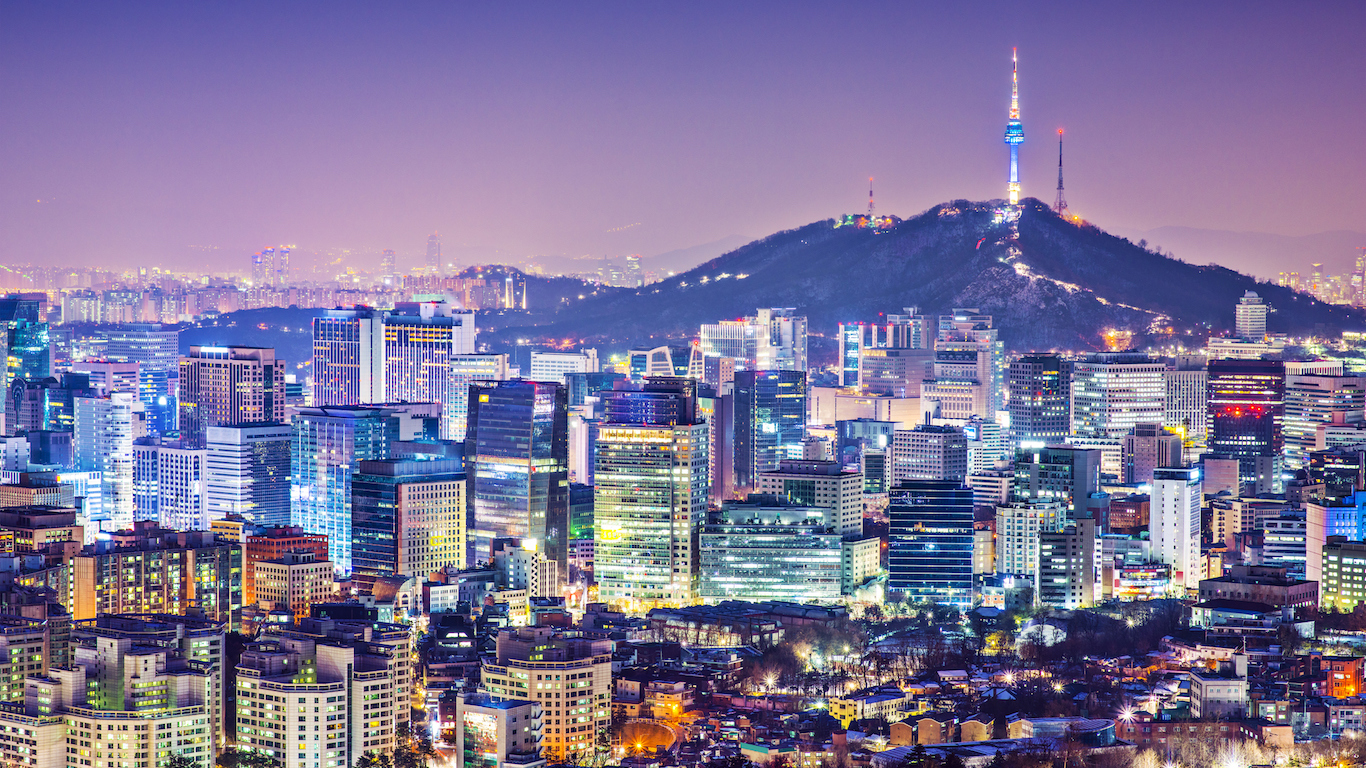
25. South Korea
> GNI per capita: $27,600
> 2016 GDP: $1.4 trillion
> Population: 51.2 million
> Life expectancy: 82.2 years at birth
Since Korea was divided into two separate entities in 1948, the Republic of Korea has flourished economically. An authoritarian rule in the country’s first few decades helped the development of of family-owned conglomerates like Hyundai and Samsung. The country has become one of the world’s leading economies, with a GDP of over $1.4 trillion in 2016.
[in-text-ad]

24. Italy
> GNI per capita: $31,590
> 2016 GDP: $1.9 trillion
> Population: 60.6 million
> Life expectancy: 83.5 years at birth
Italy’s economic output topped $1.8 trillion in 2016, accounting for over 11% of economic activity across the EU. The country is one of only 24 world wide where GNI per capita tops $30,000. As is often the case in wealthy countries, people in Italy live relatively long, healthy lives. Life expectancy at birth in the Mediterranean country is 83.5 years, nearly the highest in the world and well above the 71.9 year global average.
However, Italy is not free of economic hardship. The country’s 11.4% unemployment rate is the highest among wealthy nations.
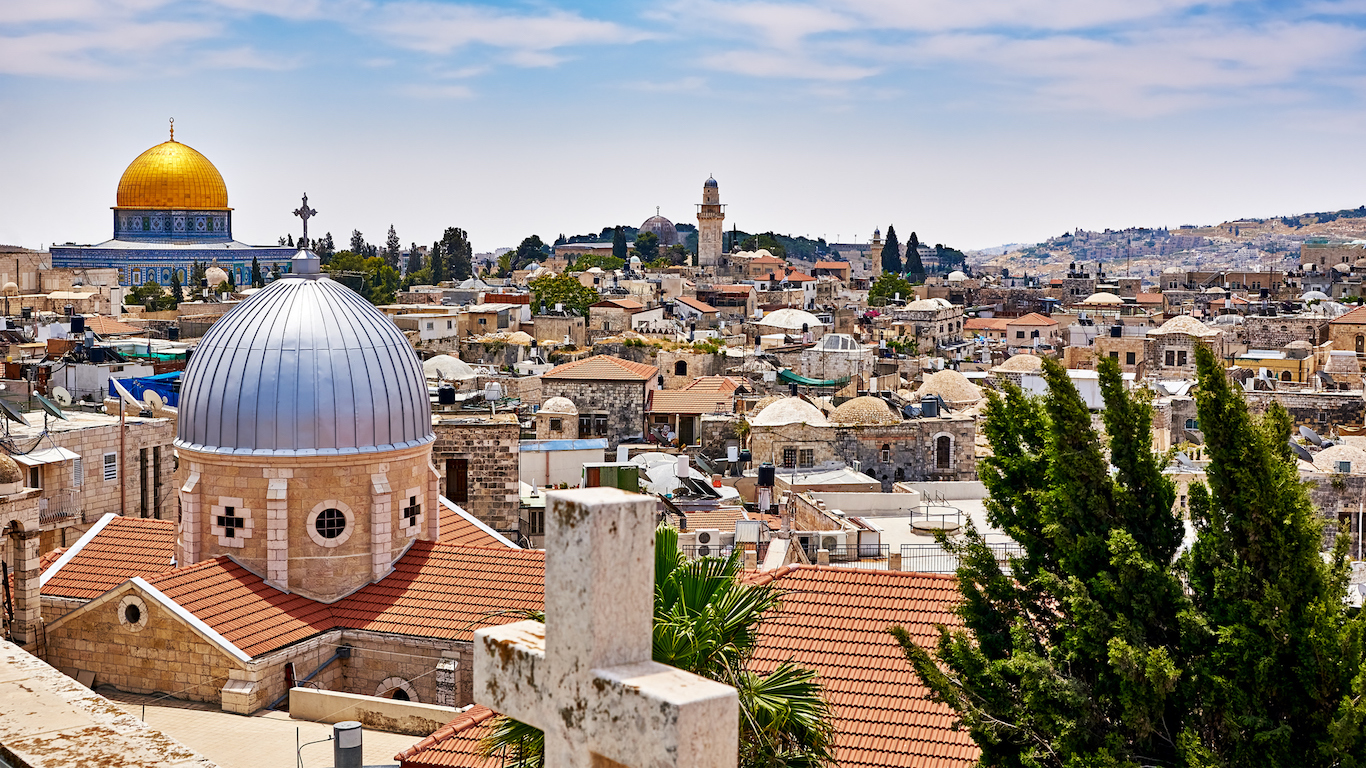
23. Israel
> GNI per capita: $36,190
> 2016 GDP: $318.7 billion
> Population: 8.5 million
> Life expectancy: 82.1 years at birth
Despite being engaged in nearly perpetual conflict with Palestinians over the division of land, Israel has developed into an economic hub in the 69 years of its existence. The densely-populated country has focused on growing its high-tech industry, a change from its agricultural roots. Israel has one of the fastest growing GDPs of the 25 richest countries, increasing 4% in 2016.
Accounting for all economic activity within Israel’s borders — in addition to wealth generated by Israeli-owned entities operating abroad — the average Israeli income is just over $36,000 a year.
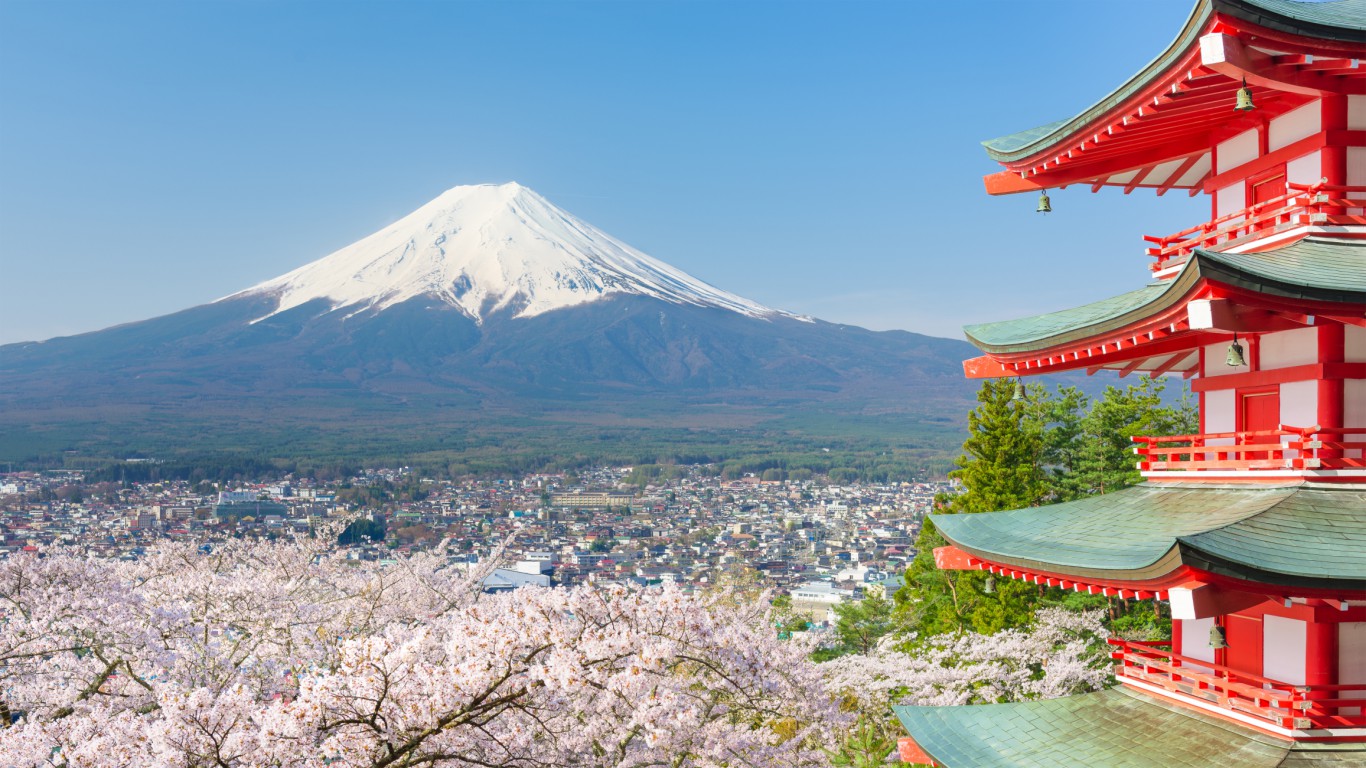
22. Japan
> GNI per capita: $38,000
> 2016 GDP: $4.9 trillion
> Population: 127.0 million
> Life expectancy: 83.8 years at birth
Japan’s private sector largely drives the country’s wealth. Home to auto giants Honda, Nissan, and Toyota, Japan is a major exporter of motor vehicles. Cars and vehicle parts represent over 20% of Japan’s annual exports of $605 billion, more than any other product. The country’s $38,000 GNI per capita accounts for Japanese cars produced in factories around the world, including the United States.
Joblessness is relatively rare in Japan. Only 3.0% of the country’s labor force is out of work, well below the comparable 4.9% U.S. unemployment rate.
[in-text-ad-2]

21. France
> GNI per capita: $38,950
> 2016 GDP: $2.5 trillion
> Population: 66.9 million
> Life expectancy: 82.7 years at birth
After being devastated during World War II, France assumed its role as a world leader in the heart of Europe. The G7 country has a sophisticated economy — planes, helicopters, and spacecraft comprised 9.3% of its exports last year, the most of any industry. Despite having a relatively high 9.8% unemployment rate, the French tend to live long, healthy lives. At 82.7 years, the country has one of the longest life expectancies in the world.

20. New Zealand
> GNI per capita: $39,070
> 2016 GDP: $185.0 billion
> Population: 4.7 million
> Life expectancy: 81.5 years at birth
Geographically isolated and without many globally recognizable companies, New Zealand is more dependent on agriculture than any other country on this list. As of 2014, farming accounted for nearly 7% of New Zealand’s GDP. In comparison, agriculture comprises less than 1.5% of economic activity in the United States. Although it is more dependent on agriculture than is typical, New Zealand is developing relatively rapidly. New Zealand’s 3.9% annual annual economic growth tops that of most other wealthy nations.
Home to only about 4.7 million people, New Zealand is less populous than most wealthy nations. Though the country’s GDP of $185 billion is smaller than dozens of other countries, on a per capita basis, New Zealand is wealthier than all but 19 other countries.
[in-text-ad]
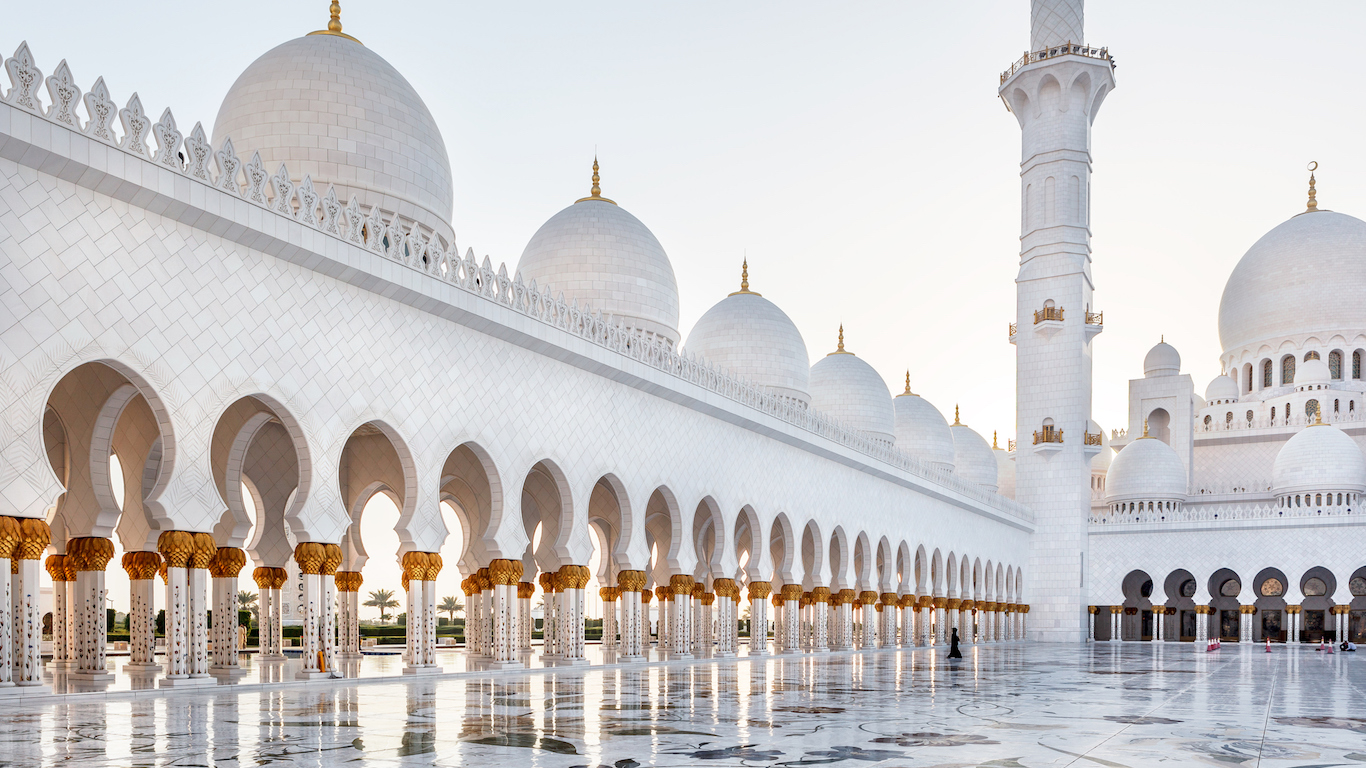
19. United Arab Emirates
> GNI per capita: $40,480
> 2016 GDP: $348.7 billion
> Population: 9.3 million
> Life expectancy: 77.5 years at birth
What was only a vast desert 50 years ago has grown into a burgeoning international center for trade, culture, and tourism. The country’s economic prosperity started with the discovery of oil in the 1950s and subsequent oil sales since 1962. Today, the UAE’s top exports are gold and diamonds, accounting 16% and 12% of all exports, respectively.
By GNI per capita, the UAE is the 19th wealthiest country in the world and the wealthiest in the Middle East.
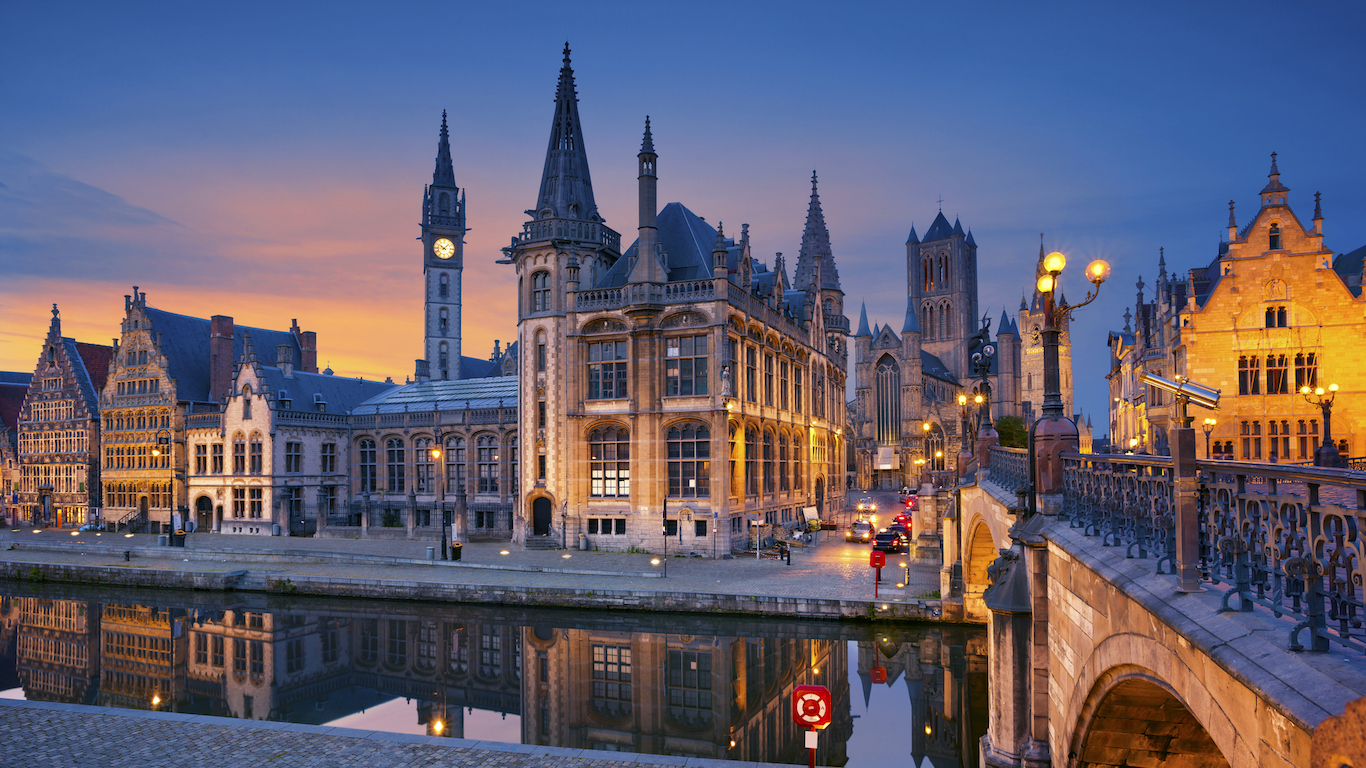
18. Belgium
> GNI per capita: $41,860
> 2016 GDP: $466.4 billion
> Population: 11.3 million
> Life expectancy: 81.3 years at birth
Belgium’s GNI per capita of $41,860 is the 18th highest in the world and ninth highest among EU member states — not including the United Kingdom. Though it ranks among the wealthiest countries in the world, Belgium faces some economic hurdles. Some 8.3% of the country’s labor force is out of work, and the country’s 1.2% annual GDP growth lags behind the average growth worldwide.
Much of Belgium’s wealth is generated through goods and services sold to customers abroad. Exports comprise nearly 85% of the country’s GDP — more than the the vast majority of countries on this list.

17. United Kingdom
> GNI per capita: $42,390
> 2016 GDP: $2.6 trillion
> Population: 65.6 million
> Life expectancy: 81.6 years at birth
Once an empire controlling nearly 25% of the world’s population and landmass, the United Kingdom has lost much of its historic dominance. Still, the country remains an economic, cultural, and political global power. Today, diversified global trade contributes considerably to the the United Kingdom’s $2.6 trillion GDP. Home to famous automobile brands such as Aston Martin and Bentley, cars are among the country’s top exports, making up 10% of total exports.
In 2016, the UK voted to leave the European Union. The departure, commonly known as Brexit, is scheduled to take place in March 2019. While the move will make the UK more economically autonomous, many practical implications to the country’s economy remain to be seen.
[in-text-ad-2]

16. Hong Kong SAR, China
> GNI per capita: $43,240
> 2016 GDP: $320.9 billion
> Population: 7.3 million
> Life expectancy: 84.3 years at birth
A British colony as recently as 20 years ago, Hong Kong is now a largely autonomous administrative region of China. Hong Kong operates like a capitalist country and is far wealthier than its sovereign, communist China. In Hong Kong, GNI per capita tops $43,000, many times higher than China’s GNI per capita of $8,260.
A strong education system can pave the way for greater future prosperity, and Hong Kong invests heavily in education. About 20% of the country’s government spending goes towards education, the largest percentage of any country on this list.
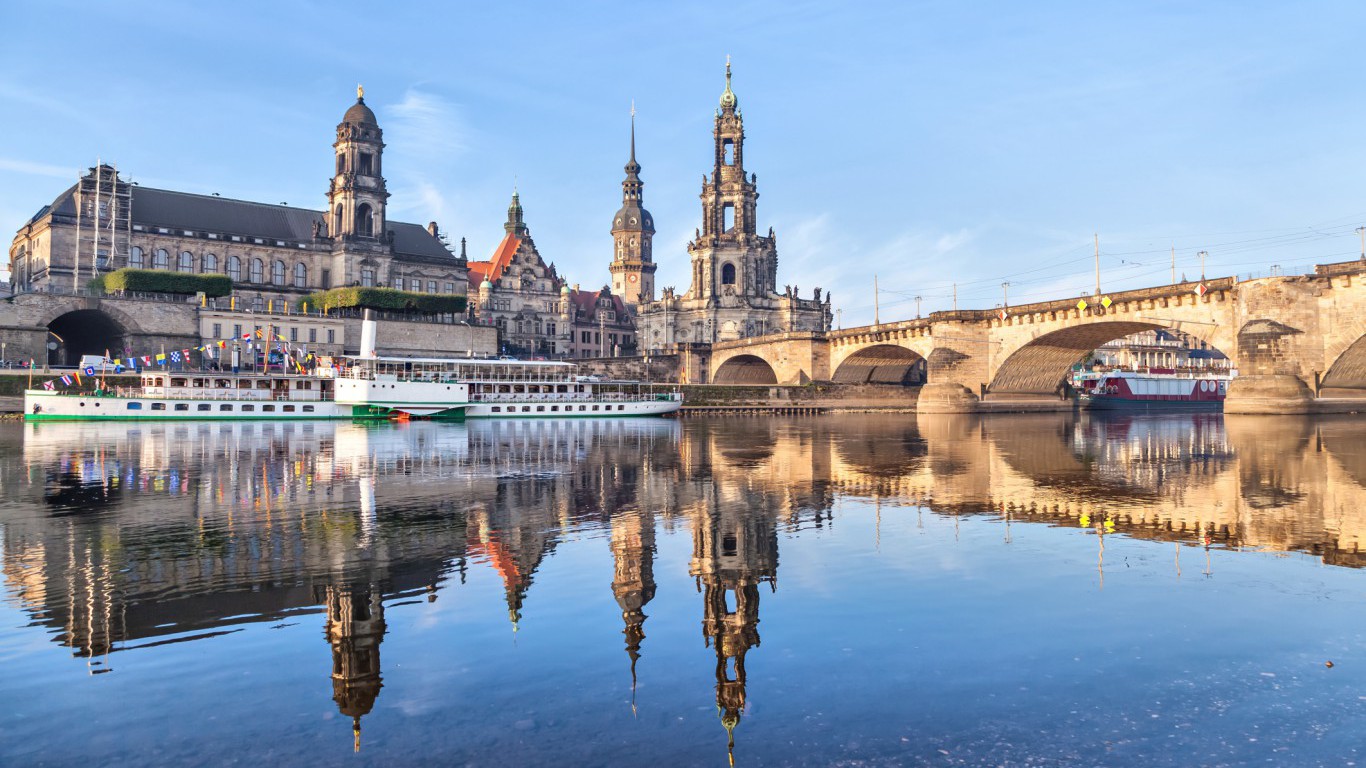
15. Germany
> GNI per capita: $43,660
> 2016 GDP: $3.5 trillion
> Population: 82.7 million
> Life expectancy: 81.1 years at birth
Home to nearly 83 million people, Germany is the most populous country in the EU — and with a $3.5 trillion GDP, it is also the EU’s largest economy. Germany is not the EU’s wealthiest country, however. Germany’s GNI per capita of $43,660 is lower than the GNI per capita of seven other EU member states and of 14 other countries worldwide.
Home to both Mercedez-Benz and BMW — two of the world’s largest luxury carmakers — Germany relies heavily on its auto manufacturing industry. Over 15% of the country’s $1.3 trillion in exports in 2016 were in cars and car parts.
[in-text-ad]

14. Canada
> GNI per capita: $43,660
> 2016 GDP: $1.5 trillion
> Population: 36.3 million
> Life expectancy: 82.1 years at birth
While Canada is the second largest country by land mass in the world, it is home to a relatively small population of close to 36 million.The sparsely populated country is one the world’s richest, with a $1.5 trillion GDP in 2016. Crude petroleum exports contribute to the country’s wealth, making up 10% of total exports in Canada. Cars and car parts are the country’s top exports however, accounting for over 15% of all exports in 2016.
Along with the United States, Canada is one of only two countries in North America to rank among the wealthiest in the world.
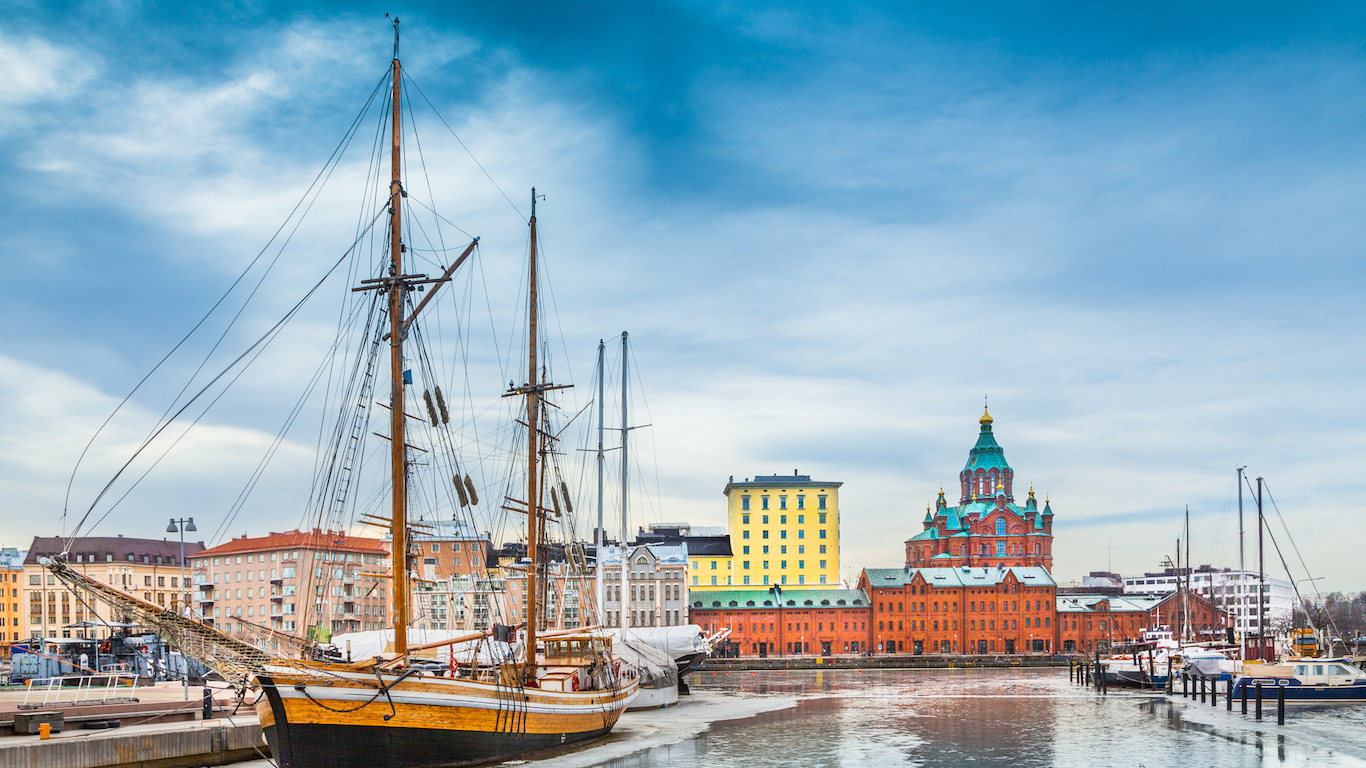
13. Finland
> GNI per capita: $44,730
> 2016 GDP: $236.8 billion
> Population: 5.5 million
> Life expectancy: 81.4 years at birth
According to Transparency International, Finland is one of the least corrupt countries in the world. Corruption-free countries are characterized by a free press, accountable public officials, and independent judges — all factors that can contribute to economic prosperity. At $44,730, Finland’s GNI per capita is higher than that of all but a dozen other countries.
Joblessness, however, is more of a problem in Finland than in most other wealthy countries. Some 8.9% of the Nordic country’s workforce is out of a job — the third highest unemployment rate among the 25 wealthiest countries.
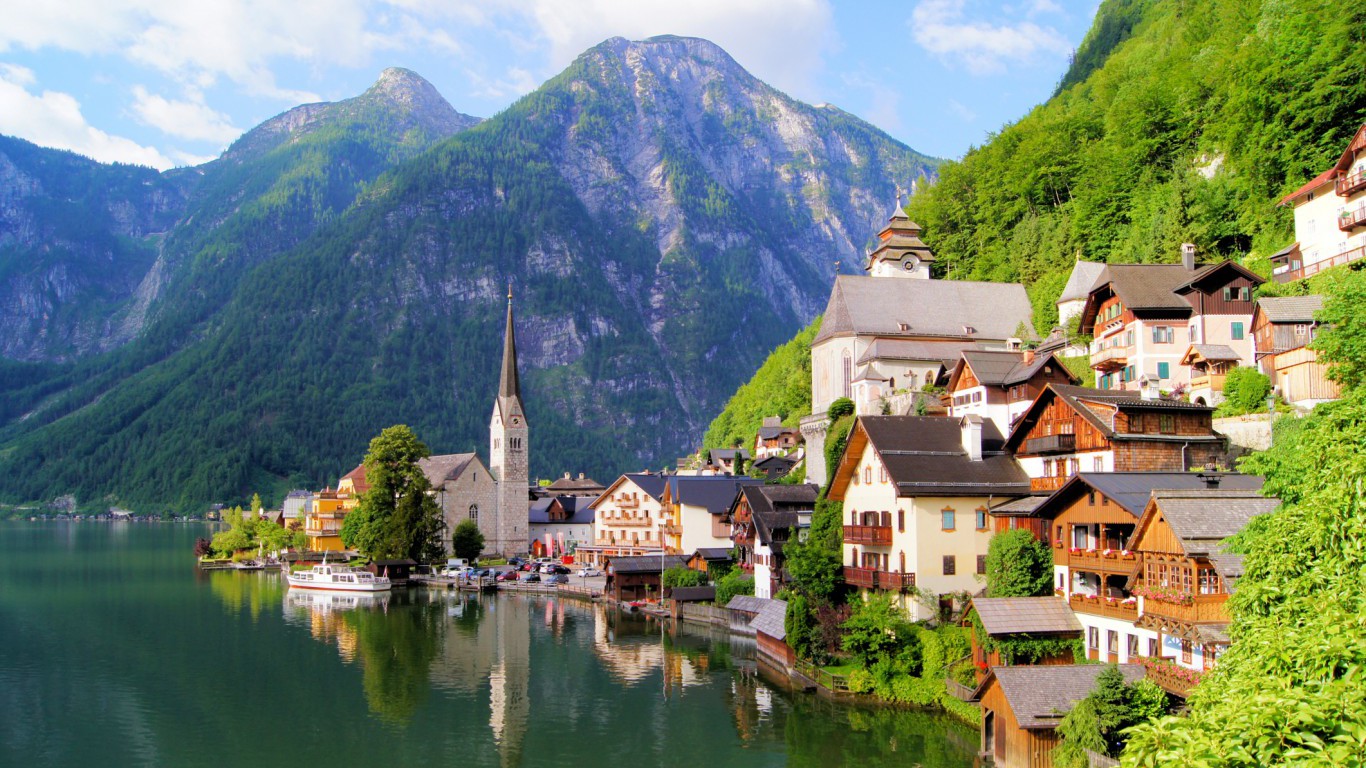
12. Austria
> GNI per capita: $45,230
> 2016 GDP: $386.4 billion
> Population: 8.7 million
> Life expectancy: 81.8 years at birth
The mountainous Central European country is among the wealthiest in world, due in large part to highly diversified trade. The pharmaceutical industry leads Austria’s exports, comprising 3.9% of its total exports, followed closely by vehicle parts at 3.2% of total exports. The country’s biggest export destination is Germany, which spent $38.8 billion on Austrian products in 2016. Austria is also one of the least hindered by corruption in the world, according to Transparency International.
[in-text-ad-2]
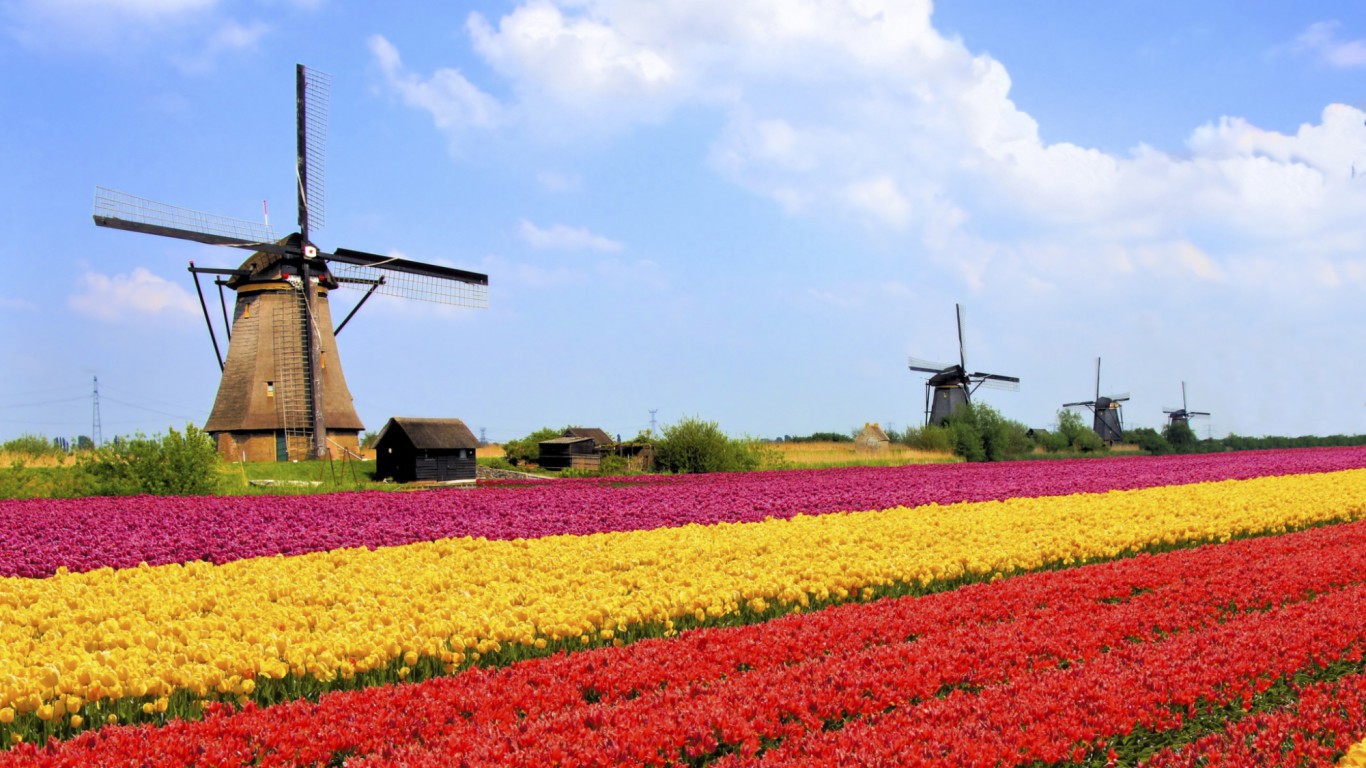
11. Netherlands
> GNI per capita: $46,310
> 2016 GDP: $770.8 billion
> Population: 17.0 million
> Life expectancy: 81.7 years at birth
Like many other countries in Northern Europe, economic prosperity in the Netherlands is not hindered by corruption. According to Transparency International, the Netherlands is one of the least corrupt countries in the world. The country’s GNI per capita of $46,310 is among the highest in the world and greater than the GNI per capita in all but four other EU member states.
As is the case in most wealthy countries, life expectancy is high in the Netherlands. At 81.7 years, life expectancy at birth in the Netherlands is about three years longer than in the United States and a decade longer than the global average.

10. Singapore
> GNI per capita: $51,880
> 2016 GDP: $297.0 billion
> Population: 5.6 million
> Life expectancy: 82.6 years at birth
With a per capita GNI of $51,880, Singapore is the wealthiest country in Asia and the 10th wealthiest in the world. Further, the country’s underlying socioeconomic conditions point to continued prosperity. For example, institutions in the country function with virtually no corruption, according to Transparency International. Unfettered by systemic corruption, Singapore’s economy is relatively strong, as evidenced by the country’s jobs picture. Only 2.0% of the country’s labor force is out of a work, the lowest unemployment rate among wealthy countries.
An educated population can be critical for economic prosperity. In Singapore, 97% of the 15 and older population are literate, far higher than the comparable 86% global literacy rate.
[in-text-ad]
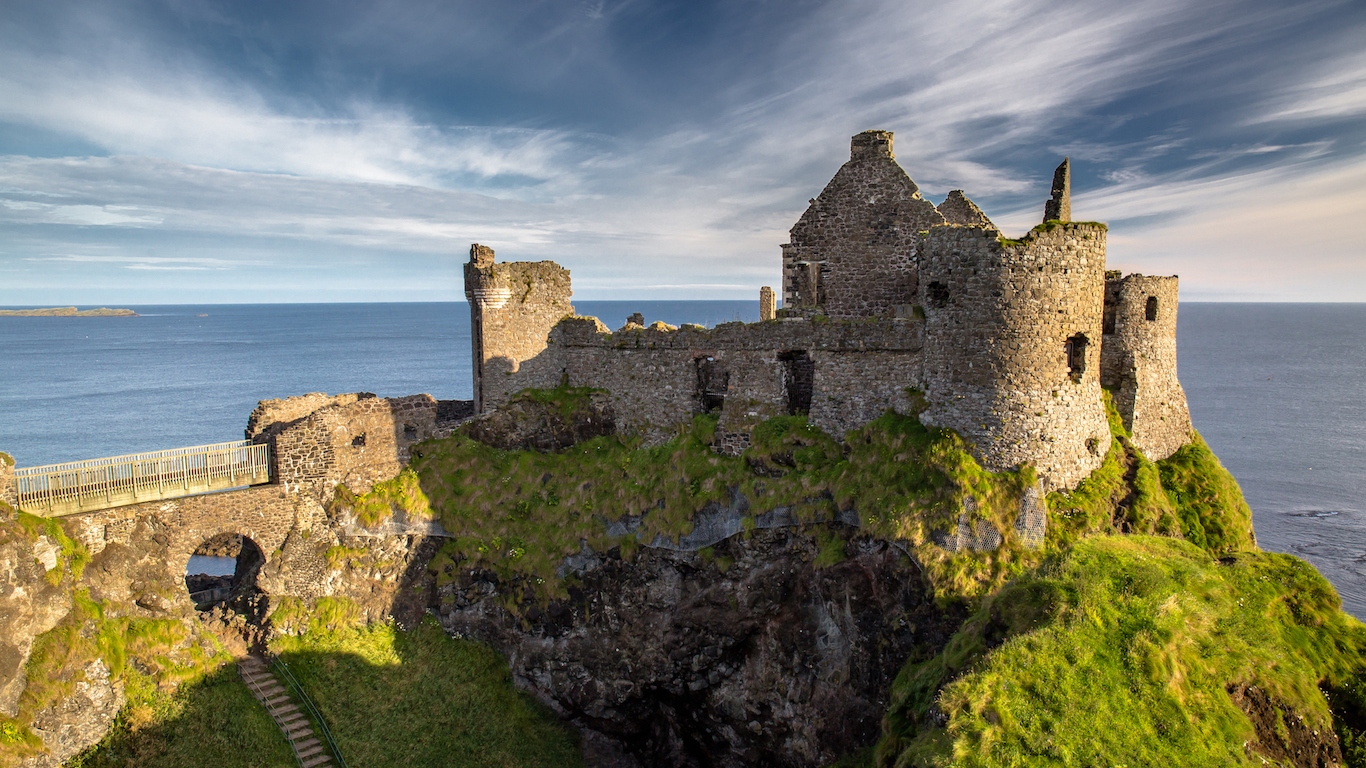
9. Ireland
> GNI per capita: $52,560
> 2016 GDP: $294.1 billion
> Population: 4.8 million
> Life expectancy: 81.5 years at birth
Despite being hit harder than most European countries in the wake of the 2008 financial crisis, Ireland is now one of the richest countries in the world. An international bailout helped the country recover and the economy has been rapidly growing ever since. In fact, at 5.2%, Ireland’s annual GDP growth in 2016 is nearly the strongest among wealthy nations. The country’s top exports are pharmaceutical products, which make up 15% of all exports.
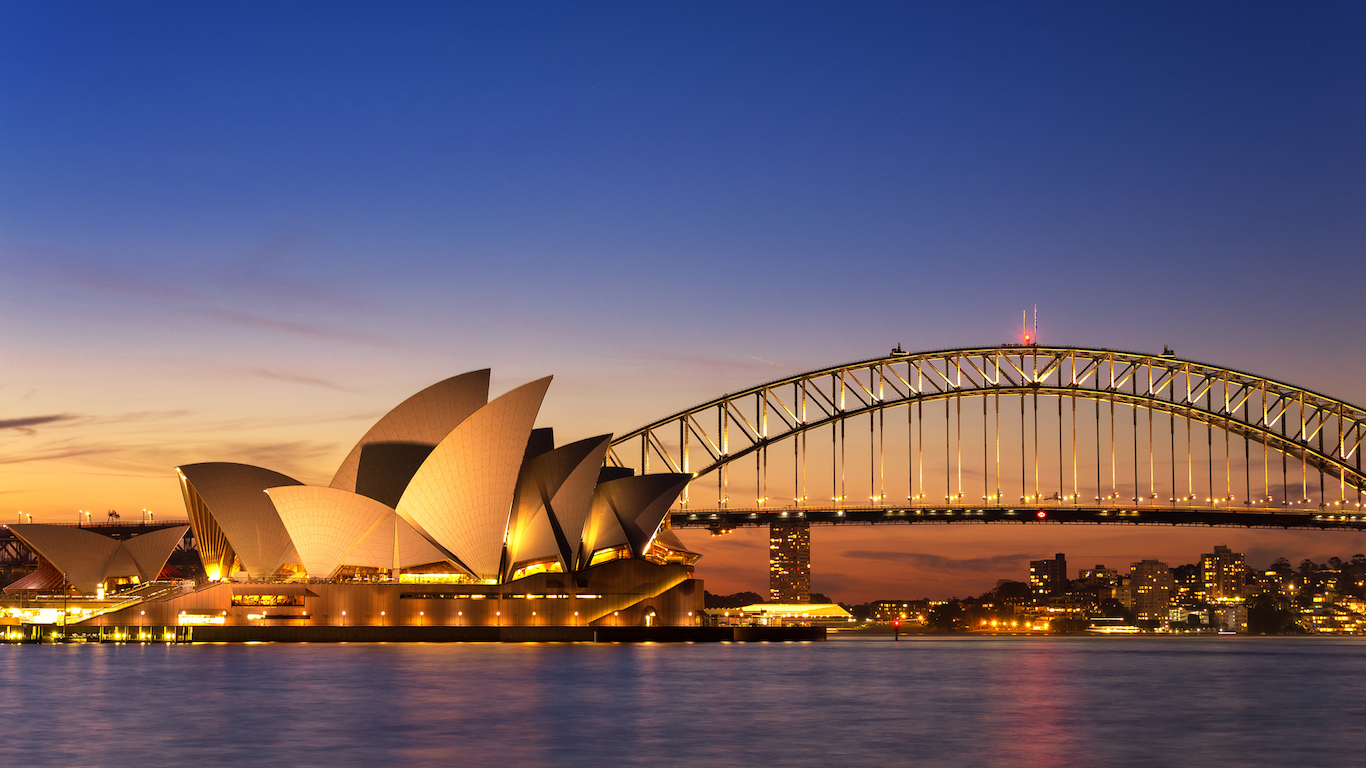
8. Australia
> GNI per capita: $54,420
> 2016 GDP: $1.2 trillion
> Population: 24.1 million
> Life expectancy: 82.5 years at birth
Much like Canada, Australia has a large landmass and a relatively small population. The country’s massive GDP was over $1.2 trillion in 2016. While Australia used to rely on Europe and the United States for its exports, its largest trading partners in recent years are in Asia. The country relies heavily on the mining industry, with the sale of iron ore and coal briquettes collectively making up 41% of its total exports. On average, Australians live off of $54,420 per year, less than $2,000 below GNI per capita in the United States.
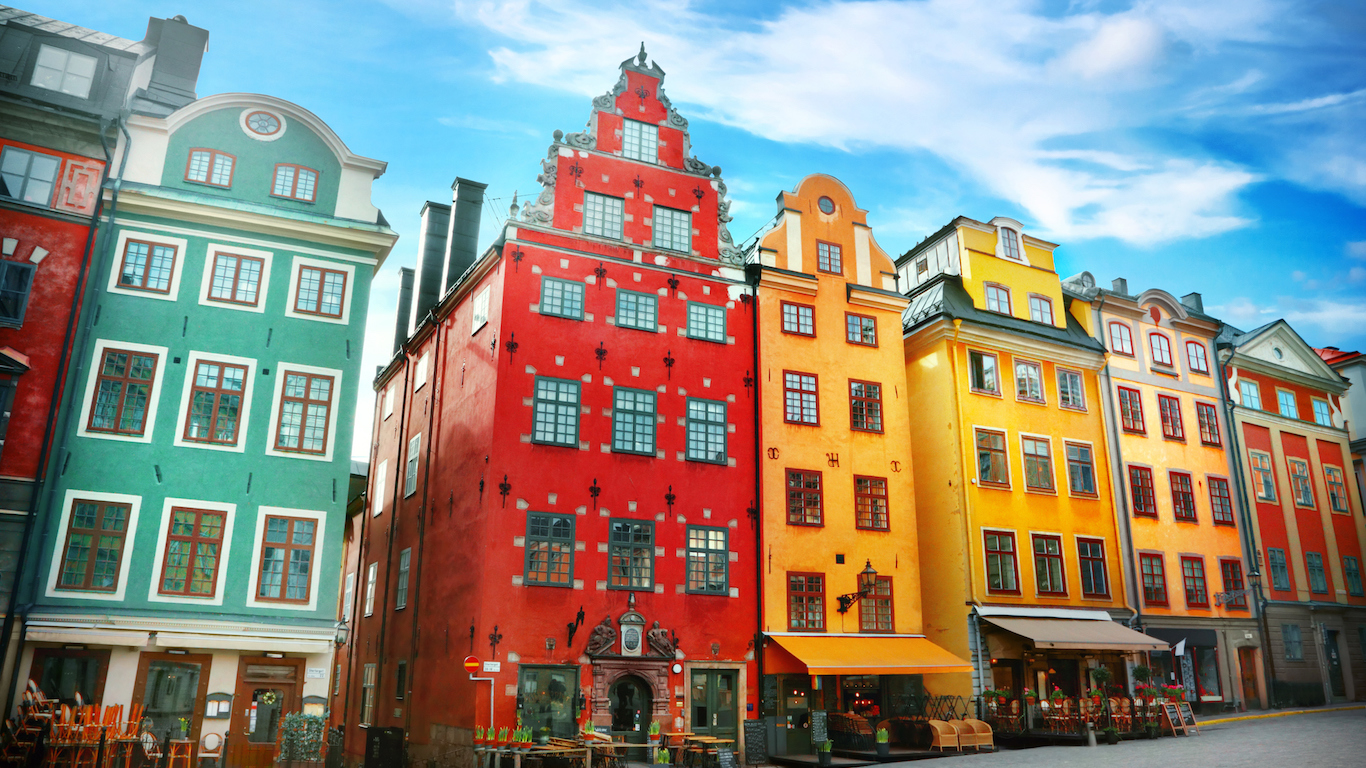
7. Sweden
> GNI per capita: $54,630
> 2016 GDP: $511.0 billion
> Population: 9.9 million
> Life expectancy: 82.6 years at birth
GNI per per capita in Sweden is $54,630, seventh highest in the world and third highest among EU member states. Like many of the world’s wealthiest countries, Sweden is relatively corruption free, ranking better than all but three other countries in the world according to Transparency International. Like other wealthy nations, Sweden has a relatively healthy population. At 82.6 years, life expectancy at birth in the country is nearly the highest in the world.
Sweden’s economy is also growing relatively rapidly. The country’s 3.2% GDP growth in 2016 topped the global economic growth of 2.4% the same year.
[in-text-ad-2]

6. United States
> GNI per capita: $56,180
> 2016 GDP: $18.6 trillion
> Population: 323.1 million
> Life expectancy: 78.7 years at birth
With an $18.6 trillion GDP, the United States has the largest economy in the world. However, on a per capita basis, U.S. economic output — including American owned companies abroad — is only $56,180, trailing the GNI per capita of five other countries. Driven largely by the private sector, the United States is home to some of the biggest companies in the world across multiple industries, including Walmart, Apple, General Motors, and General Electric.
Despite relative prosperity, income inequality and — according to Transparency International — corruption are bigger problems in the United States than in most other wealthy countries. Americans also appear to be less healthy than the populations of other countries on this list. Life expectancy at birth in the United States is only 78.7 years, lower than every country on this list with the exception of the United Arab Emirates.

5. Denmark
> GNI per capita: $56,730
> 2016 GDP: $306.1 billion
> Population: 5.7 million
> Life expectancy: 81.1 years at birth
Relatively free of bribery and unencumbered by ineffective police and judiciary institutions, Denmark is tied with New Zealand as the least corrupt country in the world, according to Transparency International. Such conditions can help foster economic prosperity, and on a per capita basis, Denmark is the fifth wealthiest country in the world and the second wealthiest in the EU.
Not all economic indicators in Denmark, however, are strong. For example, Denmark’s economy grew by only 1.3% in 2016, slower than all but four other EU member states and below the 2.4% global growth in economic output.
[in-text-ad]
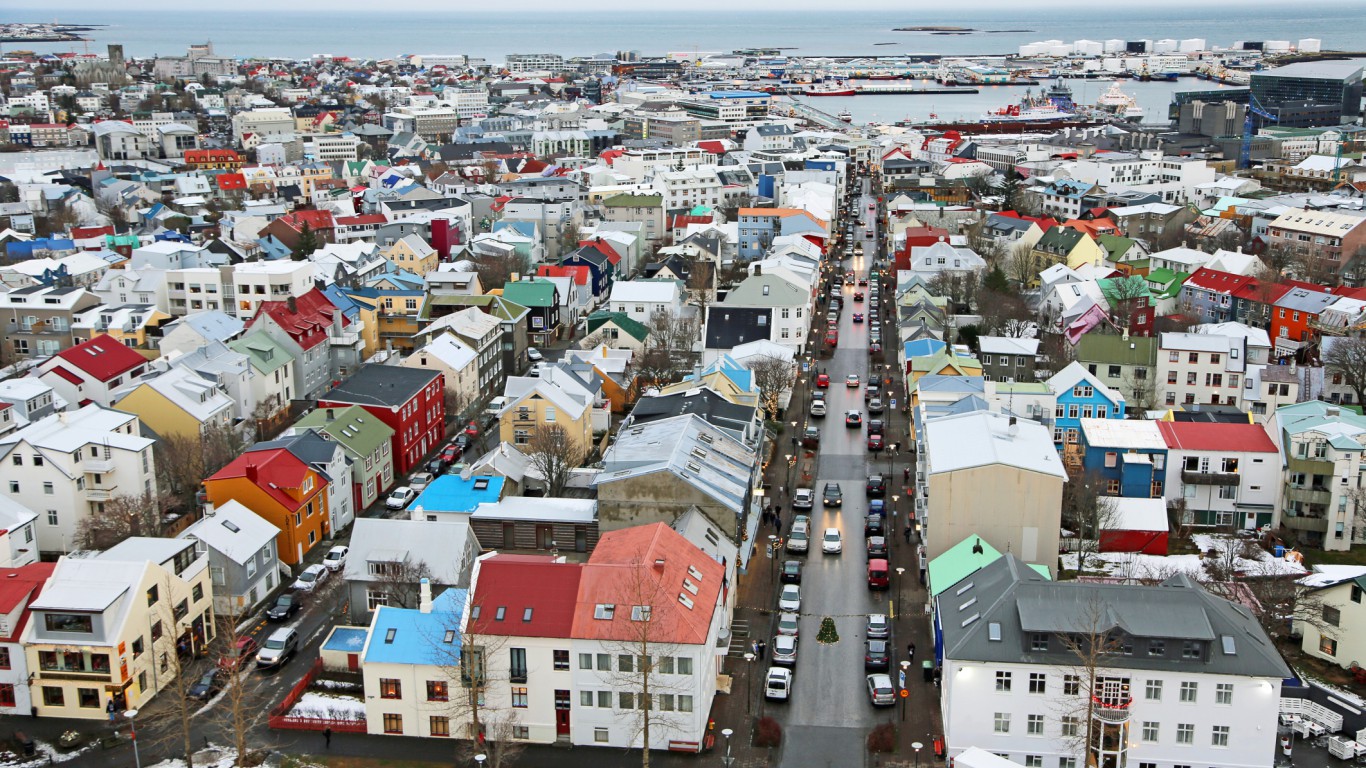
4. Iceland
> GNI per capita: $56,990
> 2016 GDP: $20.0 billion
> Population: 0.3 million
> Life expectancy: 82.9 years at birth
This sparsely populated island of only 334,000 in the North Atlantic enjoys one of the world’s most prosperous economies. This was not always the case, as the 2008 financial crisis hit Iceland hard and exposed a weak economic model that was overly dependent on the fishing industry. Since then, Iceland has grown to its former level of affluence, recording a 7.2% growth in 2016 GDP — the largest of the top 25 richest countries. Iceland relies on the export of fish products and raw aluminum, which contribute 37.6% and 28.0% to total exports, respectively.
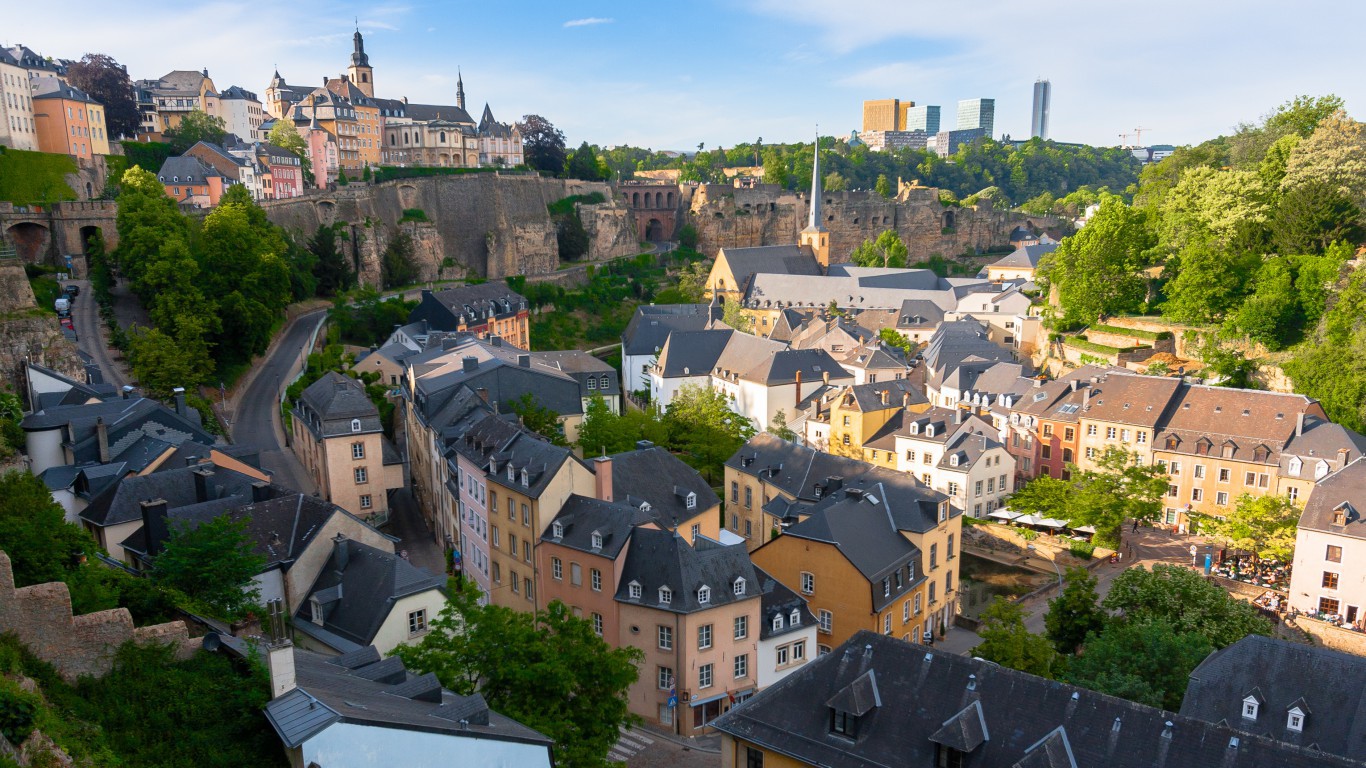
3. Luxembourg
> GNI per capita: $76,660
> 2016 GDP: $59.9 billion
> Population: 0.6 million
> Life expectancy: 82.2 years at birth
Home to fewer than 600,000 people, Luxembourg is the second smallest country in the EU by population. However, relative to the size of its population, the country’s $59.9 billion economy is large. And its GNI per capita of $76,660 is the third highest in the world and the highest among EU member states. Formerly a steel manufacturing powerhouse, Luxembourg’s economy adapted to changing market forces and is now a major center for investment management.
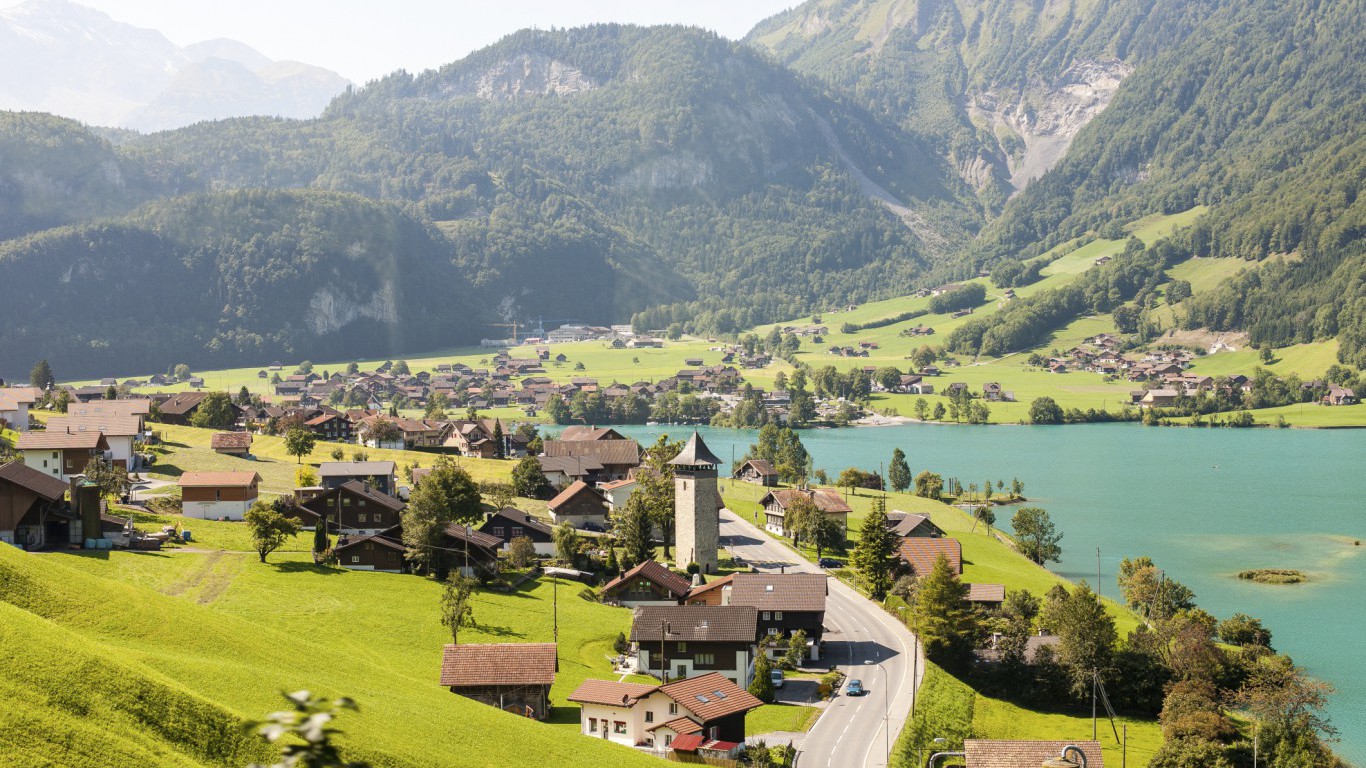
2. Switzerland
> GNI per capita: $81,240
> 2016 GDP: $659.8 billion
> Population: 8.4 million
> Life expectancy: 83.2 years at birth
According to the World Economic Forum, Switzerland has the world’s most competitive economy. The non-EU country’s efficiency in innovation, business sophistication, and labor market efficiency, among other categories earned it the WEF’s top score.
In addition to having the second highest GNI per capita, the Swiss are relatively healthy and unencumbered by institutional corruption. Life expectancy at birth in the landlocked European nation is 83.2 years, or 4.5 years longer than in the United States, and Switzerland ranks among the five least corrupt countries in the world, according to Transparency International.
[in-text-ad-2]
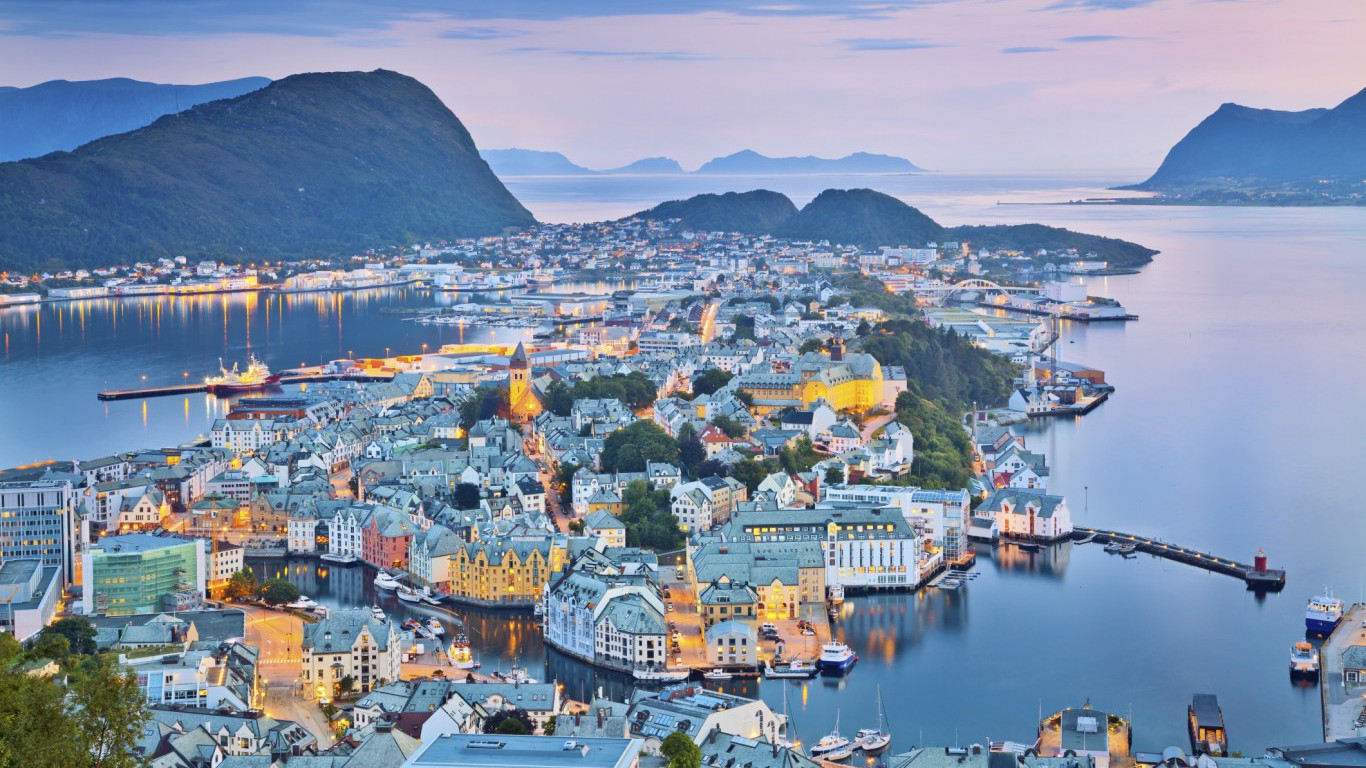
1. Norway
> GNI per capita: $82,330
> 2016 GDP: $370.6 billion
> Population: 5.2 million
> Life expectancy: 82.1 years at birth
Though well over two dozen countries have larger economies than Norway, none have a higher GNI per capita. The country’s economy is underpinned by several strong indicators. Norway outranks most others in education spending as a share of all government expenditures, in unemployment, and in an overall lack of institutional corruption. Economic growth, however, is sluggish. Last year, Norway’s GDP expanded by 1.1%, well below the 2.4% global economic growth.
More economically independent than many of its neighbors, Norway is not an EU member state.
Detailed Findings & Methodology
The wealthiest countries in the world are geographically concentrated. More than half of the world’s wealthiest countries are in Europe, including several European Union member states, largely in the northern and western regions of the continent. Of the 10 wealthy nations on this list not in Europe, more than half are in Asia.
Another common trait many of the world’s wealthiest economies share is the presence of major corporations. The United States, for example, is home to many of the largest companies in the world such as Walmart, General Electric, and Apple. Other countries on this list, such as Germany and Japan, are home to some of the world’s largest automakers like Volkswagen and Toyota. Motor vehicle exports alone from each of those countries total more than the entire GDP of other nations.
Without exception, the wealthiest countries in the world have sophisticated, diverse economies that are based heavily on innovation. Exports out of the wealthiest nations originate from a wide range of advanced industries such as pharmaceuticals and aerospace.
Despite their relative wealth, economic growth tends to be relatively slow in the world’s wealthiest countries. Due in part to globalization and developing nations becoming more business friendly, many of the world’s poorer nations are experiencing faster economic growth. Meanwhile, more than half of the world’s wealthiest nations reported slower GDP growth in 2016 than the 2.4% global average.
Another common trait most wealthy countries share is a relative lack of corruption. According to Transparency International, a corruption watchdog organization, the least corrupt countries are characterized by a free press, open public information, high integrity standards in the public sector, and judicial systems free of undue influence. With the exception of Italy, every country on this list ranks among the top third globally for lack of corruption, according to Transparency International.
To identify the richest countries, 24/7 Wall St. reviewed GNI data from the World Bank. We ranked the top 25 countries based on GNI per capita and supplemented our analysis with GDP and GDP growth rates, as well as poverty and unemployment rates, life expectancy, literacy, Gini coefficients, agricultural economic output, and additional trade data from MIT’s Observatory of Economic Complexity for 2016 and 2015. Only countries with GNI per capita figures for 2016 were considered. In our analysis, we also included Transparency International’s Corruption Perceptions Index score, which ranks countries based on perceived corruption.
Retirement planning doesn’t have to feel overwhelming. The key is finding expert guidance—and SmartAsset’s made it easier than ever for you to connect with a vetted financial advisor.
Here’s how it works:
Why wait? Start building the retirement you’ve always dreamed of. Click here to get started today!
Thank you for reading! Have some feedback for us?
Contact the 24/7 Wall St. editorial team.